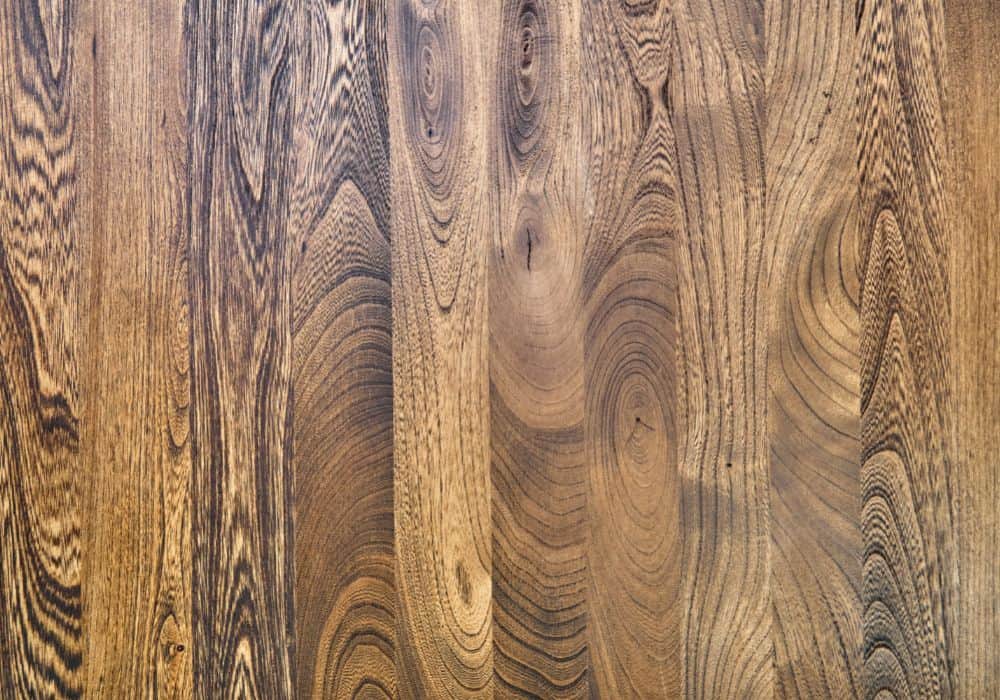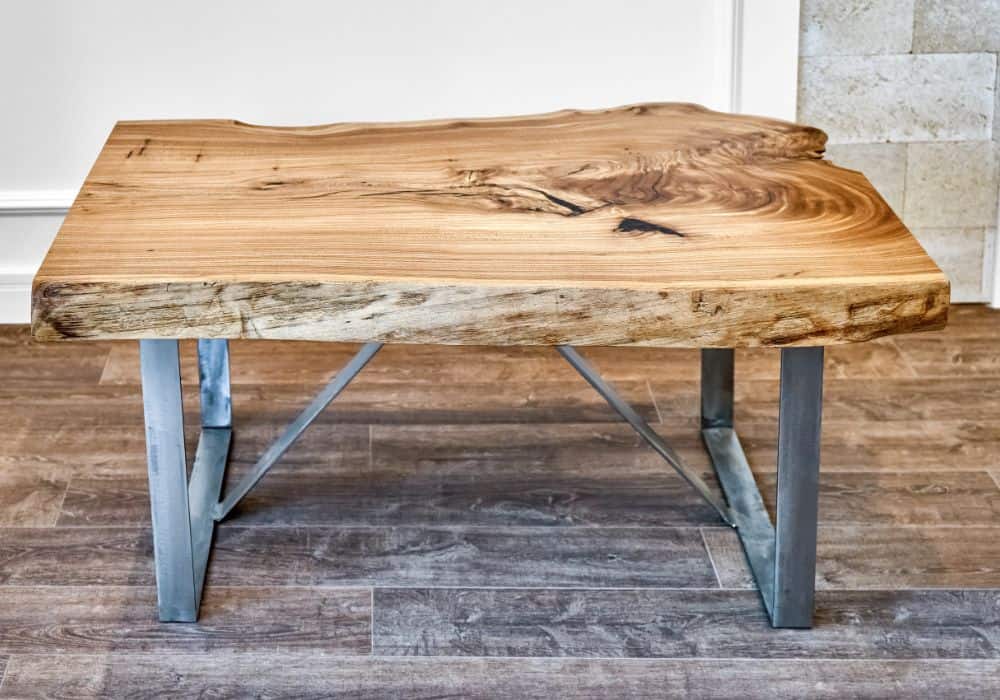If you are in the market for hardwood for construction, you may have come across elm. Elm is one of the finest wood and timber you will find, but many do not know whether or not to classify it as hardwood. Is it hard enough to hold up under duress, even though it looks good?
When it comes to types of wood, there is a common misconception that hardwood is always harder and denser than softwood. The reality is that hardwood is not always denser or harder than softwood.
Some quarters classify elm under “soft hardwood” lumber, meaning that it is tough and durable, yet still softer than other hardwoods. While this may be true, the wood is still stronger than it feels or looks.
Elm’s unique interlocking grain makes it even more resistant to splitting, while its bold and beautiful growth ring pattern creates a look that is one of a kind. So, is elm a hardwood? Let’s take a closer look to find out.
Table of Contents
What Is Hardwood?
To understand and determine whether or not to call elm hardwood, you must know what hardwood is and what it does. Hardwood is a type of wood from deciduous trees, such as oak, maple, cherry, birch, and other hardwood trees.
You will find that hardwood feels and acts naturally denser and heavier than softwood. This makes it a little difficult to use, although the qualities also mean it lasts longer and produces better quality results than softwood.
Hardwood is typically more durable and resistant to decay, which means you can use it for various applications, such as furniture and flooring. You can easily distinguish it from softwood by the growth rings. They appear as dark and wide lines in the hardwood, while softwood has narrow and light rings.
Is Elm Hardwood?
Elm is hardwood. It belongs to the Ulmaceae family and is native to North America, Europe, and Asia. You can identify it by its strength, hardness, and durability; elm typically has a Janka Hardness rating of 830.
This hardness rating classifies it as a soft hardwood, which means it is durable and tough, yet softer than other hardwood types. Elm is also highly resistant to splitting and cracking, making it an excellent choice for furniture and flooring.
An Overview of Elm
If you are familiar with elm, it does not need an introduction. It is typically a beautiful tree with lots of leaves that draws your attention because of its height and shape. It is also a flowering plant that grows white flowers in clusters.
Elm trees can reach heights of up to 100 feet and can live for hundreds of years. They are economic trees and are protected from random felling in some countries. The wood of elm trees is creamy white to light brown, with a straight grain and a medium to coarse texture.
Wood from an elm tree is relatively easy to work with if you know what to do. However, it is prone to warping and twisting if you do not fully and properly dry it. In other words, you can lose large amounts of wood due to warping, even though it is hardwood.
Properties of Elm
It is easy to confuse elm with sapwood because of their outward resemblance. But when cut, the difference in the heartwood color is clear. Visually, wood from the elm tree ranges in tone from reddish brown to light tan, while sapwood approaches off-white.
The usually dramatic wood grain resembles ash and features unique swirls and waves that make it stand out. The color of the heartwood will determine the elm species you have. There are three species of elm: white elm, mountain elm, and field elm.
White elm typically has a light brown-gray heartwood, while the mountain elm has a heartwood color that ranges from ruby to light brown. The field elm has the darkest wood, which is chocolate in some and reddish brown in others.
Common Uses of Elm
Elm wood is used for a variety of applications, including furniture, flooring, and decorative paneling. Because it is resistant to water, splitting, and cracking, furniture makers and contractors love to use it for wood flooring, paneling, and furniture.
Its beauty always stands out when used in homes, the same way you notice oak used for furniture. Elm is also easy to work with and steam bends easily. These qualities make it great for supportive furniture parts like frames, backs, seats, and legs that need to be structurally strong.
In addition, elm glues well and holds nails and screws without issue, and finishes nicely with staining or varnish.
Other items that the toughness of elm is useful for include butcher blocks, cutting boards, chair seats, spindles, decorative paneling, boxes, baskets, barrels and crates, caskets, hockey sticks, wagon wheels, tool handles, and bats.
However, hand tools are practically useless on elmwood. In other words, you cannot cut, shape, or work on elm with a hand tool. It is usually better to use machines or power tools for the best results.
Outdoor Uses
On the flip side, elm is not a great idea for use outdoors. While it is strong, water resistant, and can undergo a lot of stress, it is still soft hardwood. Therefore, it is more prone to rot and decay than the typical hardwood or softwood.
Conclusion
Elm is hardwood, although it is classified as soft hardwood. This is primarily because of its hardness rating. However, it holds up under duress.
Elm is an excellent choice for furniture and paneling. You will also find it a good choice for flooring and other uses, so consider it if you are building a new house or renovating an old one.

